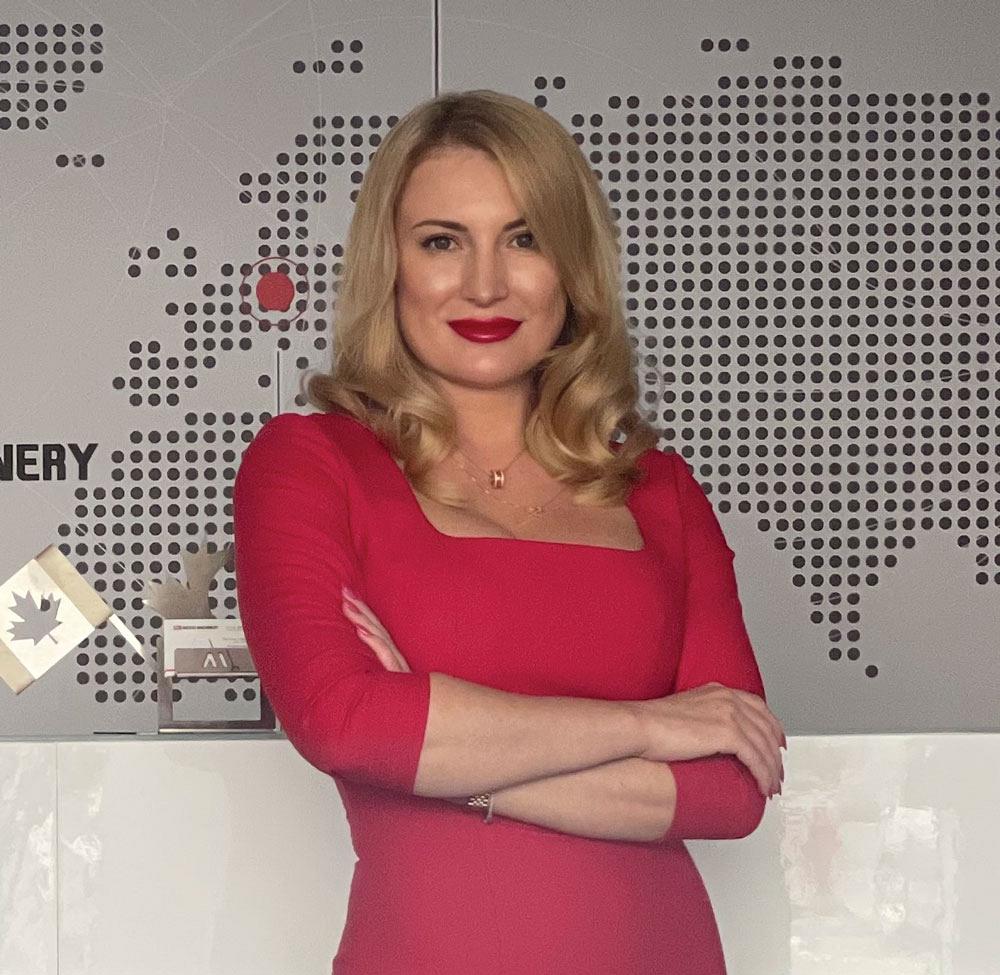- FMA
- The Fabricator
- FABTECH
- Canadian Metalworking
Promoting diversity from within
How presence, promotion, and dedication to change can help manufacturers attract diverse talent
- April 30, 2021
The manufacturing sector in Canada continues to experience a labour shortage of more than 41,000 jobs. To bridge that gap, it’s critical that the industry find ways to encourage a diverse pool of individuals to take an interest in the opportunities that exist. Addressing the gender disparity could have a large impact, if handled well.
According to Women and Gender Equality Canada, women currently account for only 28 per cent of the manufacturing sector workforce, and the numbers don’t vary all that much across the country. The lowest proportion is 20 per cent in Saskatchewan, and the highest is 31 per cent in P.E.I.
Improving gender diversity in the manufacturing sector makes both economic and moral sense, concluded a Trillium Network for Advanced Manufacturing report. The report, which includes case studies of five Ontario manufacturers (Honda of Canada Mfg., Sanofi Canada, Muskoka Brewery, MAD Elevator, and Cascades), showed that focusing on gender diversity helped companies attract and retain top-level talent. Attracting and retaining talented employees is important for manufacturers that face challenges related to labour shortages and an aging workforce.
Seeing the Diversity Gap
This need for greater diversity is something Irina Solovianenko, managing partner at Access Machinery, noticed when she launched her business five years ago. The Vaughan, Ont., company distributes and provides service for metal fabrication machinery and laser cutting equipment.
“This is an industry where new technologies are transforming the manner in which metal fabrication responds to the increasing demand for customer-specific products and services,” she said. “This leading-edge, innovation-based industry provides endless opportunities for the manufacturing sector.”
In the past five years, Solovianenko has been in manufacturing facilities across Canada and has witnessed the need for greater diversity first-hand.
“Going to any facility, you notice that there is a lot of room for women to grow,” she said.
The question is, how do you encourage diversity and also create pathways to success for women in manufacturing? Solovianenko personally has engaged with two organizations that are making an effort to strengthen the presence of women in industry, both to act as a role model and help grow the diversity in her own business.
“Networking is an important part of building any career, but as a woman business owner, I think it’s particularly important to connect with organizations that recognize the challenges women sometimes are faced with in a traditionally male-dominated industry,” she said.

Solovianenko says that promoting the evolution of a more inclusive and diverse sector is a full-time commitment.
CME’s Women in Manufacturing
The Canadian Manufacturers & Exporters’ Women in Manufacturing (CME/WIM) group is one organization that’s doing what it can to promote women in industry. The basis of its efforts has been formalized in its “Untapped Potential” report, an action plan that identified five areas where action is needed to increase the number of women in manufacturing:
- More female role models are needed to inspire and encourage young women.
- Access to modern manufacturing facilities will help to change the perception of manufacturing.
- More efforts are needed to encourage young girls to pursue an education in STEM and/or the skilled trades.
- Businesses need to adopt more inclusive workplaces.
- Businesses need to find creative ways to improve work-life balance for employees.
The organization’s “We Can Do It” campaign has a goal of increasing the number of women in manufacturing by 100,000 in five years, bringing the total number of manufacturing jobs held by women to 525,000 by 2023.
“One of the tools the organization has created for companies interested in improving their diversity profile is a ‘Gender Inclusion and Diversity Toolkit,’” said Solovianenko. “It can help companies map out a learning plan of steps each employee group can follow to truly champion inclusion and diversity.” The kit is available for download on the CME website.
Solovianenko has opened Access Machinery up for Skills Ontario events in the past and, in her leadership role, aims to serve as a role model to others.
“Any young woman visiting us has the opportunity to see three of the CME’s goals in action – today’s modern fabricating technology, a woman in a leadership role, and an inclusive environment,” said Solovianenko. “At Access Machinery women sit at the decision-making table in executive roles. Getting a seat around that table is imperative. One cannot lead change by being absent. Presence is power, and power makes change possible.”
Committing to Change
Solovianenko says that promoting the evolution of a more inclusive and diverse sector is a full-time commitment.
“Every day in every way you need to be dedicated to your ultimate cause,” she said. “CME/WIM provides a great network to promote ideas and sharing information, but the real work begins after our meetings. The litmus test of one's commitment is what one does after the networking sessions. That means being a real advocate for change. The entire group will know whether we were successful in our mission to inspire and encourage greater participation. Our future numbers will tell us how effective we were.”
Many organizations aren’t sure where to start on this journey, which is where CME’s toolkit and studies like Trillium Network’s can be helpful.
One of the best places to start the conversation is to ask women in your organization what changes they might make to create a more welcoming environment for women in general. The Trillium study encourages companies to involve women in the design, implementation, and review of policies and practices designed to support gender diversity.
The study also suggests collecting and analyzing data on women in the workplace.
“Do a scan of the organization,” said Dr. Brendan Sweeney, the Trillium Network’s managing director and co-author of Gender Diversity and Ontario Manufacturing: Lessons from Five Leading Companies. “Do a scan of who your recent applicants are. Do a bit of a scan of the people who have recently left your organization. You might have had some women coming through. How long did they stay? Did they leave? Are they older or younger on average than some of your men? When you put a job posting out, how many women and how many men apply? How many are shortlisted? Anything related to data is important. You know what it takes – time.”
Sweeney added, “It’s not about quotas, it’s about good hiring practices.”
It’s also a journey, and no company is going to be perfect. Solovianenko herself mentioned that Access does not yet have a female technician on its team but that they hope to remedy that.
Like any change process, it’s a matter of starting out on the journey and moving forward.
WBE Canada
Another organization Solovianenko believes plays an important role in industry by supporting female business owners is WBE Canada, an organization that certifies, supports, and promotes Canadian-owned businesses that are at least 51 per cent owned, managed, and controlled by women.
WBE supports women in many ways. One such way is through building connections between the businesses it supports and corporate and government buyers. The idea is to remove barriers and create supply chains that are more diverse and inclusive.
The organization also delivers education, training, coaching, and mentoring programs to help ramp up the capacity of female business owners to bid successfully on large procurement opportunities.
“At WBE I reside on the Supplier Advisory Committee,” said Solovianenko. “The goal is to provide mentorship and guidance to other members (woman-owned businesses) on how to establish successful relationships with buyers.
“In business as in life, clarity of purpose is the key. The mission of WBE is perfectly aligned with my values, principles, and beliefs. The objective of encouraging greater participation of women in this field focuses my attention on sharing my personal business experiences to better inform potential future participants how to navigate in today’s business world. Raising awareness of the challenges and opportunities is a great way to give back and provide valuable knowledge.”
Whether you are looking to support women in your own organization or build bridges with other women-owned businesses to organically grow the number of successful women in industry, starting a dialogue with employees and with organizations such as those mentioned here can be a useful place to begin.
CME, cme-mec.ca
Trillium Network for Advanced Manufacturing, trilliummfg.ca
WBE Canada, wbecanada.ca
subscribe now


Keep up to date with the latest news, events, and technology for all things metal from our pair of monthly magazines written specifically for Canadian manufacturers!
Start Your Free Subscription- Trending Articles
CWB Group launches full-cycle assessment and training program

Achieving success with mechanized plasma cutting

3D laser tube cutting system available in 3, 4, or 5 kW

Brushless copper tubing cutter adjusts to ODs up to 2-1/8 in.

Welding system features four advanced MIG/MAG WeldModes

- Industry Events
MME Winnipeg
- April 30, 2024
- Winnipeg, ON Canada
CTMA Economic Uncertainty: Helping You Navigate Windsor Seminar
- April 30, 2024
- Windsor, ON Canada
CTMA Economic Uncertainty: Helping You Navigate Kitchener Seminar
- May 2, 2024
- Kitchener, ON Canada
Automate 2024
- May 6 - 9, 2024
- Chicago, IL
ANCA Open House
- May 7 - 8, 2024
- Wixom, MI
















